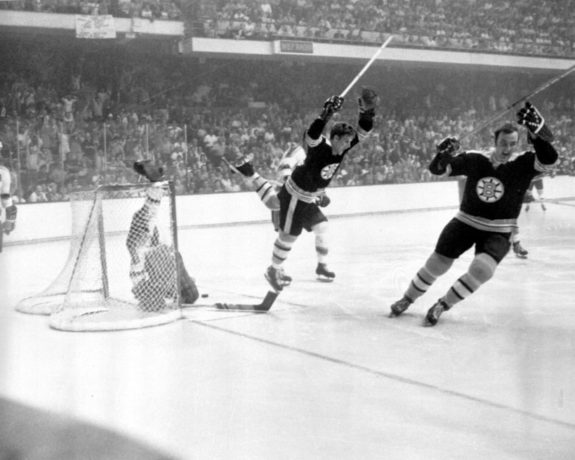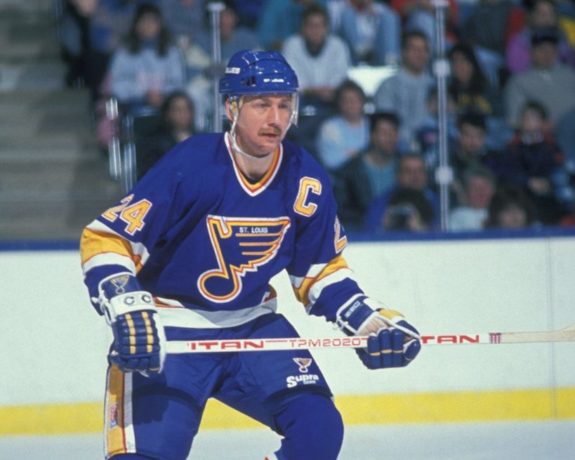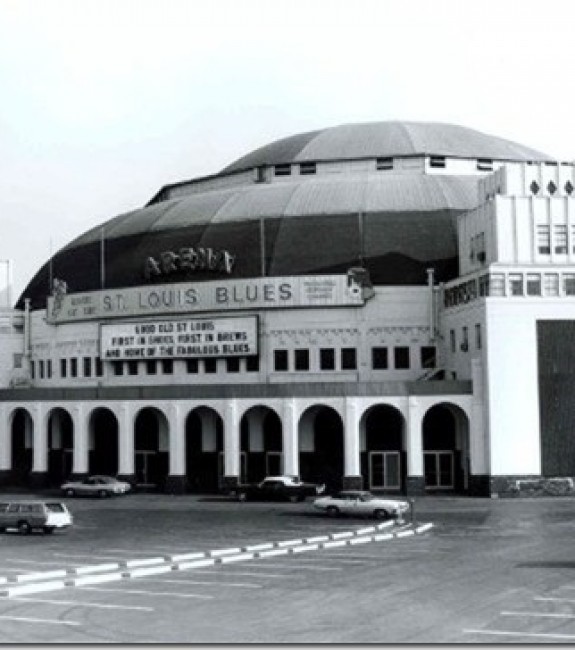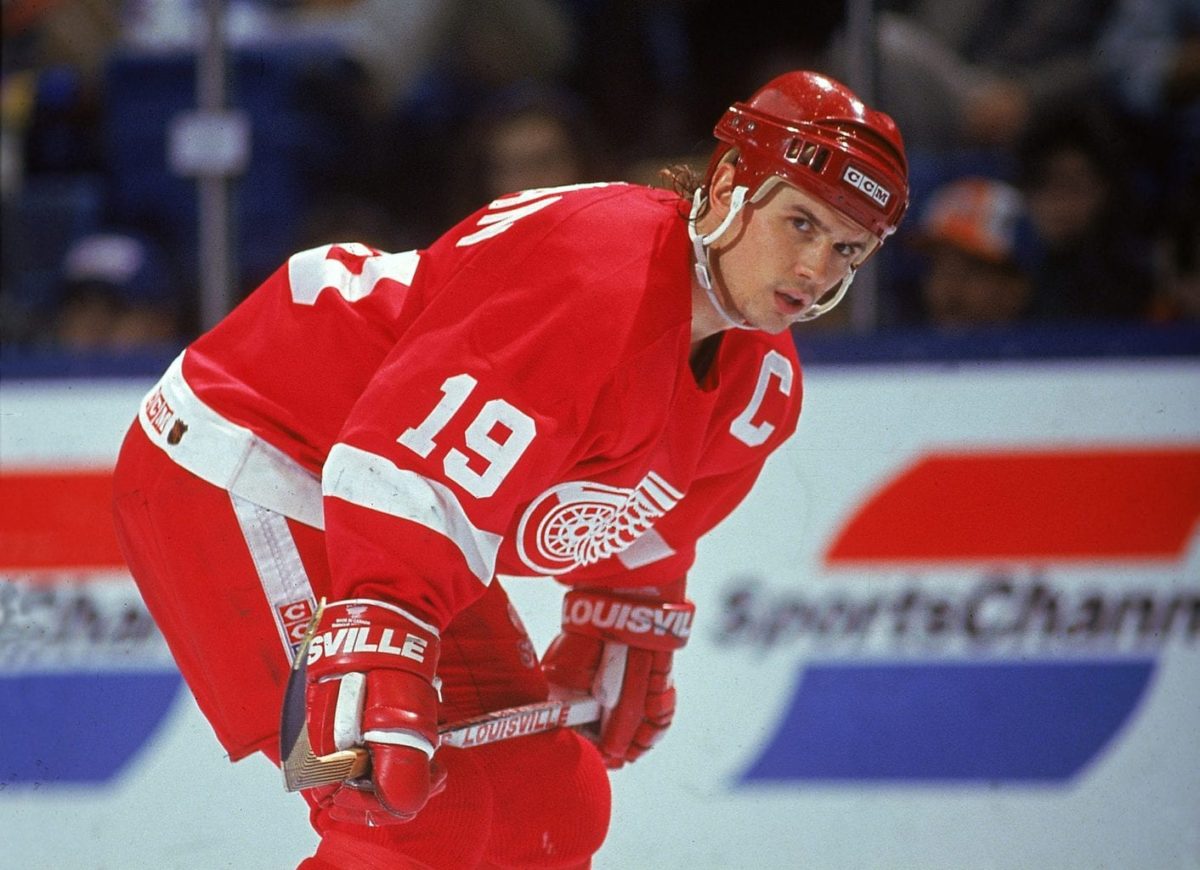In the history of the NHL, there have been some pretty terrible draft mistakes. Some draft classes have been total duds. Teams have missed on great players by just one pick, and sometimes, even the first-overall pick has been a failure. But rarely have NHL teams simply refused to select players in the draft. Yet that is exactly what the St. Louis Blues did at the 1983 Draft.
Since Tom Stillman and an entirely local ownership group bought the Blues in 2012, the team has been stable, but that wasn’t always the case. An attempted sale of the team during the 80s led to an ownership dispute, and that in turn caused the Blues to skip the 1983 draft and forfeit 10 picks. But we’re getting ahead of ourselves. Let’s tell the story of how the St. Louis Blues almost became the Saskatoon Blues and, in the process, gave up on a draft entirely.
Blues Early Franchise Success
The Blues joined the National Hockey League in the first expansion of six teams back in 1967. With hockey legends like Al Arbour, Red Berenson, and “Mr. Goalie” Glen Hall part of the original lineup, St. Louis established itself as the best of the new crop of six teams. That earned them the honor of advancing to the Stanley Cup Final each of the first three seasons of the team’s existence, where they were immediately squashed by one of the Original Six teams (the Montreal Canadiens twice and Boston Bruins once).

The Blues’ initial owners were Sid Saloman Jr. and his son, Sid Saloman III. The Saloman family oversaw most of a decade of success for the expansion franchise, with growing attendance and expanding revenue. But by the end of the decade, it was the younger Saloman who was fully in charge, and the franchise began to struggle. They needed financial relief, and a local business took an interest in helping them. Ralston Purina executive R. Hal Dean invested, even painting the team’s arena’s roof in a red and white checker pattern to reflect his company’s iconic logo.
But things were not as pretty inside the newly renamed “Checkerdome.” 1978-79 remains arguably the worst season in franchise history, as the team managed just 18 wins. Attendance slipped, revenue cratered, and the franchise was in trouble. Then Dean retired, and his successor, William Stiritz, made no effort to hide his desire to divest from the hockey industry.
Attempted Move to Saskatoon
Despite the arrival of players that would become franchise greats, like Bernie Federko, Brian Sutter, and Wayne Babych, the team still continued to struggle on the ice. They managed a 107 point season in 1980-81, but immediately sank below the .500 mark, and Stiritz was eager to use the losing skid as an excuse to sell.

Stiritz found an eager hockey market in an unlikely location: Saskatoon, Saskatchewan, a Canadian city of just 172,000 residents at the time. A group called Batoni-Hunter Enterprises, Ltd. was making moves in Saskatoon. Led by World Hockey Association co-founder Bill Hunter, who also owned the Edmonton Oilers while they were in the WHA, the group claimed to be ready to break ground on an 18,000 seat venue in Saskatchewan at the price of $43 million.
The $43 million stadium price tag did not concern Stiritz nearly as much as the $12 million the group offered him to purchase the franchise. He accepted the offer, and immediately began a bloodletting of the front office. President and general manager Emile Francis, now in the Hockey Hall of Fame as a builder, left for the Hartford Whalers, and Stiritz fired 60 percent of the team’s staff. Everything was finalized for the sale except the NHL’s approval.
NHL Blocks the Sale; Stiritz Abandons Draft
Though Stiritz was only concerned with his bottom line, the NHL was concerned with longterm franchise viability. They did not believe that Saskatoon would be able to sustain an NHL franchise, even with a brand new stadium, and the Board of Governors rejected the attempted sale by a vote of 15-3.

The vote infuriated Stiritz, and Ralston fired a $60 million antitrust lawsuit in US District Court against the owners and against NHL President John Ziegler less than a week later. Roughly 10 days later, Ralston went even further, announcing that it was effectively abandoning the franchise, “tendering” it to the NHL “to operate, sell or otherwise dispose of in whatever manner the league desires.” They still expected the League to pay them fair value for the franchise, but they washed their hands of its future.
The 1983 NHL Draft was scheduled just five days after that announcement. In limbo, Blues officials traveled to Montreal at their own expense, completely in the dark as to what Ralston would have them do. The news shocked the NHL world: Ralston and Stiritz forbade the executives from selecting players for their team, stating that the Blues “were not required to participate, and therefore would send no representative.” It remains the only time a team has ever abandoned a draft completely.
Greats from the 1983 Draft
The Blues had already traded a few of their 1983 Draft picks, but they surrendered 10 in the chaos surrounding the attempted sale. At the time, it seemed a less dire decision than it would become, as the draft was not expected to produce much top-tier talent. But St. Louis native Pat LaFontaine went third overall, followed by Steve Yzerman at four. In fact, the draft became one of the best in Red Wings franchise history.

Outside of a loaded first round, there were several other notable talents the Blues might have drafted but missed out on. Claude Lemieux went at pick 26. Peter Zezel joined the Philadelphia Flyers at pick 41. Legendary tough guy Bob Probert went to Detroit with the 46th pick. Esa Tikkanen, who would eventually briefly join the Blues, went in the fourth round. The great Rick Tocchet was drafted at the end of the sixth round. And Dominik Hasek, one of the greatest goaltenders in NHL history, was drafted in the 10th round with pick 199.
Any of those players might have joined the Blues had they chosen to use any of their picks. But due to the ownership dispute, they missed out on taking anyone. One of those players might have been the necessary boost to get a team that made the playoffs every season that decade over the hump to their first Stanley Cup victory.
A Happy Ending in St. Louis
The forfeiture of 10 draft picks was the last straw for the NHL, who filed a $78 million countersuit the following day. The back and forth became increasingly nasty, until Ralston gave the League an ultimatum: take control of the team, or see all of its assets liquidated.
Eventually, Ziegler and the League took action by essentially dissolving the Blues franchi se into a loose association of assets. Ziegler publicly stated his desire to keep the team in St. Louis, but that was far from a guarantee, until a California businessman named Harry Ornest stepped up to work with local business and buy the team. The League approved the sale of the collected assets formerly known as the St. Louis Blues, and gave Ornest “a new St. Louis Blues franchise, free of any legal incumbrances.”
It was hardly the end of the franchise’s struggles. Ornest was a hero to many local fans, but he was not the owner for very long. He sold the team to a local group headed by Michael F. Shanahan in 1986. The team would see three more owners before Stillman took control in 2012. With help from general manager Doug Armstrong, Stillman would be the owner to finally lead the Blues to the promised land of Stanley Cup glory.
With local ownership, a renovated arena, a 15-year naming rights deal with Missouri’s car rental company Enterprise, and a recent Stanley Cup victory, the constant fear that the Blues might leave the Gateway City seems like a distant memory. But it was a very real threat in 1983, so severe that it led to the team vacating 10 draft picks in 1983. But for the Board of Governors and Ornest’s timely investment, St. Louis might never have seen a Stanley Cup at all.